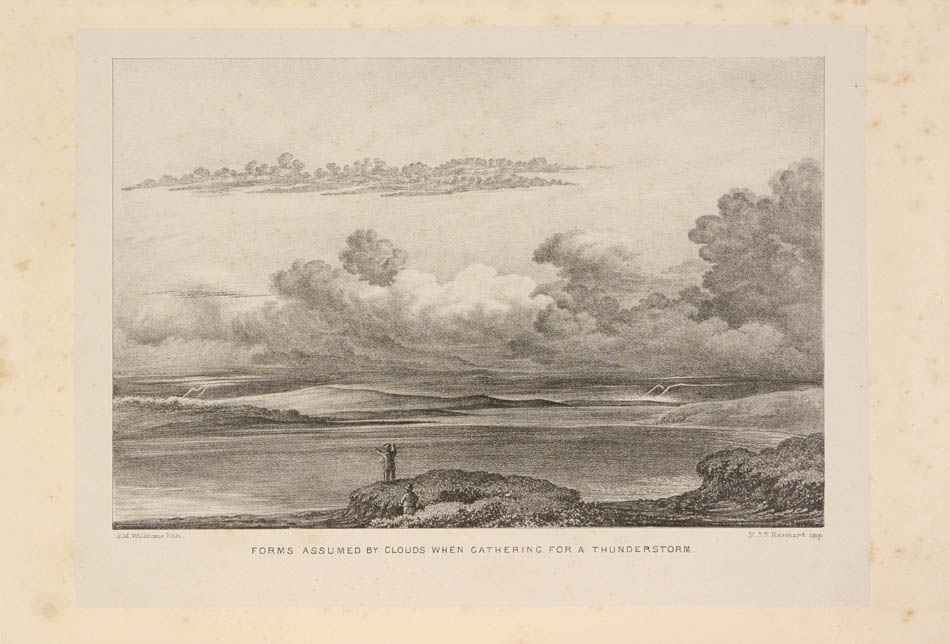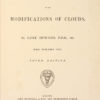The ‘student of clouds’ or ‘father of meteorology’ Luke Howard (1772-1864) was by profession an industrial chemist, but his great interest in meteorology led to his studies on clouds, and his devising of the system of Latin cloud names which was adopted internationally and is still in use. He introduced the three basic cloud names: cirus, cumulus and stratus.
As a young man Luke Howard was one of a circle who in March, 1796, formed themselves into an Association called the Askesian Society, for the discussion of scientific questions. Among the Members were William Allen, William Phillips, Alexander Tilloch, and H. Pepys. The Society was merged into the Geological Society in 1806.
He possessed a registering clock by which the variations of the barometer were recorded on the outer portion of the dial, which made one revolution in the twelve months. These diagrams were afterwards published, at great expense, under the name of Barometrographia. In Barometrographia, he noted down the atmospheric pressure readings from 1815 to 1834 at his homes in Tottenham, London, and Ackworth, Yorkshire, alongside accounts of the weather.
“”Howard’s contributions to meteorology over half a century were profound. He had not limited himself to clouds but had looked at radiation, urban heat islands and wind flow. Fifty years before, at a lecture in Tottenham, he had even suggested that the rotation of the earth might deflect winds off course. He had explained to an audience that as the air travels north or south the earth is forever ‘slipping away under it’.”” Peter Moore, The Weather Experiment, Chatto and Windus, 2015.
Alfred Waterhouse was an English architect, famous in particular for designing the Natural History Museum of London.
Only five copies are known in public libraries, and none are of have been on the market.
Description
Third edition, folio (28.5 x 22.5 cm), xvi, 37 pp., 6 plates. Green cloth gilt.
Provenance: Alfred Waterhouse (ex-libris)






